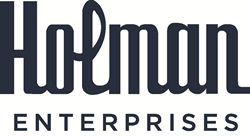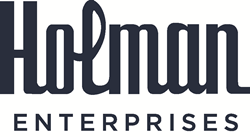
Radical “where’s my pizza” transparency in healthcare sets a higher bar for patient engagement and provider success
Seen as a whole, which is the way patients see it, the seamless, end-to-end integration of clinical, financial and administrative functions addresses all of the pain points listed by revenue cycle executives. “Where’s My Pizza” transparency gives patients and their providers just what they need
LAFAYETTE, Calif. (PRWEB)
November 14, 2019
Most readers are probably familiar with the popular pizza delivery app that shows the status of a pizza delivery order from the moment it’s ordered to the point when it’s on its way. This seemingly simplistic application instills confidence that the order is correct and will soon arrive to be enjoyed. Confident about their order and its status, customers are less likely to consider competitors and are relieved of needless anxiety and frustrating follow up. The non-trivial investment to develop and operate this application fulfills a primary customer need.
Healthcare, by contrast, represents the ultimate in non-transparency. This is particularly true when it comes to patients’ financial experiences. As a result, some frustrated patients simply decline to pay or delay payment. The same consumer who knows exactly where their Pizza is lacks even the most basic knowledge about the financial implications of their healthcare experience.
For some forward-looking healthcare providers like HCA Healthcare, this “Where’s My Pizza” concept has become the mantra for a more common-sense and inclusive approach to the patient experience. It has also earned respect for its promise as a critical management tool for an industry that must now adapt to thrive.
The “where’s my pizza” experience requires the seamless integration of a healthcare provider’s systems – both clinical (EHR) and administrative/financial. It also calls for user-optimized, patient-facing technology; a “digital front door” that becomes the patient’s virtual pathway to care and wellness. From the day the patient starts looking for a provider, through the care episode and throughout the billing and payment processes, patients expect a single source of truth – a resource they can trust for information about everything related to their care experience.
“Where’s My Pizza”, engages patients with satisfying, interactive experiences that fit into their lives. Perhaps best of all, it extends the quality of a provider’s clinical care into every dimension of the patient’s care experience in particular the financial dimension.
Recently, my company, Loyale Healthcare, published analysis titled “Hospital Revenue Cycle: Providers Can Turn Pain into Gain.” In it, we turned our attention to a set of challenges identified in Navigant Consulting’s “5 Pain Points for Revenue Cycle Executives”, which was developed after Navigant and the Healthcare Financial Management Association (HFMA) surveyed revenue cycle executives.
The five pain points identified in the analysis follow:
1. Optimizing the return on the Electronic Health Record system (EHR) investment
2. Enhancing Patient Engagement
3. Improving Clinical Integration
4. Managing Cost and Scale, including through robotic process automation and the forging of innovative partnerships
5. Rebalancing Health System Revenues, as one would with an investment portfolio – rationally and strategically
It is clear to us that these pain points don’t fall exclusively within the domain of revenue cycle. Based on Loyale’s work with hospitals, specialty providers and healthcare networks, we’ve witnessed up close the many ways that revenue cycle has become a proxy for larger operational and strategic issues, as well as organizational well-being.
In this light, these pain points become more far reaching and much more urgent. Overcoming them calls for the development of systems and policies to deliver what we call radical transparency. Not just in pricing, but in every dimension of the patient experience for the entire patient journey. But it doesn’t end there. Transparency must also be leveraged to empower providers to meet the never-ending challenges facing the modern American healthcare system.
Patients are in the driver’s seat in today’s healthcare marketplace or what PwC called “The New Health Economy. In a sector of the economy characterized by dramatic shifts in the payer mix, demographic disruption and a proliferation of new competitors, a healthcare provider’s ability to attract, engage and delight patients is the key to its long-term success. That means delivering the kinds of experiences we consumers have come to expect from all our commercial interactions.
As consumers, we no longer subscribe to the “doctor knows best” presumption that prevailed in the industry for decades. Today, we have more choices. Because we are on the hook for more of the expense, we want to know how much it will cost – out of our own pockets and for our insurance company. We want to know when those charges will be incurred, when we’ll need to have the funds ready and what our payment options are.
We also want to know how what we’re spending aligns with the care we’re getting, when and where our appointments are, and how we should prepare. When we arrive, we want our provider to be ready for us. If we filled out paperwork before, we don’t want to fill it out again. We want predictability, accessibility and seamless integration. As patients, we don’t care that providers wield a multitude of disparate systems. We just know that, for example, “we used one bed…why on earth can’t we get just one bill?”
We want the bills from our physician, hospital, radiologist, therapist and anesthesiologist to be delivered in a single, seamless presentation that aligns with every clinical experience that accompanied those charges. We want to serve ourselves when and where we please, and it has to be easy. Throughout, we want to feel confident that the practitioners who are treating us are competent if not exceptional. When we have questions, we want prompt attention and compassionate, competent responses. We want to know where we are, why we’re there, how we’re doing, where we’re going and when we’re likely to be done. In other words. We want transparency.
By tackling the first and third pain points listed above – optimizing the return on the EHR and improving clinical integration, a provider effectively has the means to deal with the second pain point – Enhancing Patient Engagement. Here’s an example from our own experience.
Loyale’s patient financial engagement platform has been deployed by a large health system with many hospitals and hundreds of physician practices. Throughout the highly collaborative implementation process, the provider worked with Loyale specialists and engineers to identify a number of originally unplanned for system integrations that would enable a more seamless, transparent patient experience.
One of these integrations was with the provider’s patient portal. Part of its Electronic Health Record system (EHR), the portal served patients a partial view into the clinical dimension of their care experience, but it offered no visibility into the financial and/or administrative. Patients could view their prescriptions, make and change appointments, even communicate with their caregivers, but there was no way to learn about – let alone manage – the other important elements of their care. Working with Loyale, the provider recognized the gap between what they were delivering to their patients and what their patients expected, then took steps to bridge that gap.
By integrating Loyale’s patient financial engagement platform with the above-mentioned hospital network’s EHR and patient portal, the provider became capable of delivering a holistic patient experience. They also engaged more fully with patients, offering tools to educate and empower patients so they can participate more fully in their care and recovery. Just as important, because of this seamless end-to-end functionality, the provider now enjoys unprecedented transparency into its patient-pay revenue cycle. More than ever before – staff, management and executives can see what’s working and what’s not so they can make more informed decisions about what to do next.
Optimizing Operations to Optimize Revenue
The fourth and fifth pain points listed by revenue cycle executives in the above-mentioned analysis were; managing cost and scale (largely through automation) and rebalancing hospital system revenues. Again, the execution of technology-enabled patient financial engagement checks the boxes.
Another benefit of the system integrations that support radical “where’s my pizza” transparency is this: Once integrated, automation like Loyale’s can be deployed to automate a variety of patient- and provider-facing functions. By doing so, the system reduces costs associated with traditionally labor-intensive work while improving patient experiences. Leveraging sophisticated technology, the Loyale-powered system automatically segments patient populations for more appropriate financial and communication experiences. Patients get the messages they need, when and where they’re most likely to be seen and acted upon
For the provider, the system’s segmentation engine also generates intelligent workflows. These workflows empower staff with critical most-collectible-first information, while allowing revenue cycle executives to identify their most valuable patient-pay revenue streams and take steps to manage underperforming “assets” more effectively.
Seen as a whole – which is the way patients see it – the seamless, end-to-end integration of clinical, financial and administrative functions addresses all of the five pain points listed by revenue cycle executives. At the same time, the operational and analytical seamlessness of the integration can have a profound impact for hospital and healthcare network operations. Patients are demanding more from their healthcare providers. “Where’s My Pizza” transparency gives them – and their providers – just what they need.
Kevin Fleming is the CEO of Loyale Healthcare
About Loyale
Loyale Patient Financial Manager™ is a comprehensive patient financial engagement technology platform leveraging a suite of configurable solution components including predictive analytics, intelligent workflows, multiple patient financing vehicles, communications, payments, digital front doors and other key capabilities.
Loyale Healthcare is committed to a mission of turning patient responsibility into lasting loyalty for its healthcare provider customers. Based in Lafayette, California, Loyale and its leadership team bring 27 years of expertise delivering leading financial engagement solutions for complex business environments. Loyale currently serves approximately 12,000 healthcare providers across 48 states. Loyale recently announced an Enterprise level strategic partnership with Parallon including deployment of its industry leading technology to all HCA hospitals and Physician Groups.


















